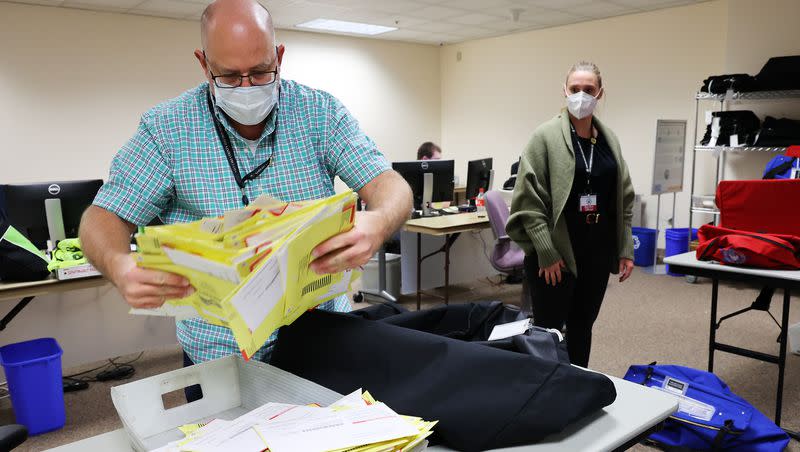It’s Election Day in Utah — here’s how you can still vote

This story has been updated.
While Utahns plan their Thanksgiving spread, Salt Lake County Clerk Lannie Chapman is prepping for the state’s unusually timed general election.
This year, Utah’s municipal elections are two weeks later than normal, on Tuesday, just two days before Thanksgiving.
The rescheduled vote comes after the state legislature convened in June to map out the 2nd Congressional District special election after former Rep. Chris Stewart announced his resignation.
While postponing the off-year election will fill the vacant congressional seat quicker and is cheaper than any alternative, it also pushes county election offices into unfamiliar — and possibly holiday-shattering — territory.
Related
How to vote on Election Day
Utah relies heavily on mail-in voting, but state residents had to drop their ballot in the mailbox on Monday in order for it to count.
To vote on Election Day, voters can put their ballots in a secure ballot drop box or they can vote in person. Locations for drop boxes or polling places can be found on the Vote.Utah.gov website.
Voters are able to register to vote on Election Day, and they then can vote using a provisional ballot.
Lt. Gov. Deidre Henderson, whose office oversees voting, has been posting on social media, reminding voters to turn in their ballots. She also expressed gratitude for election workers who are giving up their holiday prep time.
Thanks for the reminder @UtahDOT! Last day to turn in your ballot. Drop in secure dropbox or vote in person if you prefer. 🗳️
More at https://t.co/jYavxtQIxb 🇺🇸
You may also register in person and vote with provisional ballot.🗳️
Last day to mail in via USPS was yesterday. 📫🚫 pic.twitter.com/rMDgEneFzV— Lt. Gov. Deidre M. Henderson (@LGHendersonUtah) November 21, 2023
Will election workers have to work on Thanksgiving?
Given the unusual timing of the election, election workers may not be finished counting votes before Thanksgiving.
“I’m going to try really hard to make sure we don’t have to work on Thanksgiving Day,” Chapman said. “But my team’s ready for whatever we need to do here.”
Chapman said her office has been processing ballots since the day after they were sent out on Halloween. But election workers are still expecting “a really large drop” to come on Election Day.
Whether county election workers will be kept counting ballots into Wednesday and Thursday “just depends on when people turn in their ballots,” Chapman said.
“The earlier people get them to us — as soon as they know who they want to vote for — we can process them and have them available for election night results,” Chapman said, adding, “that’s super helpful, not only for my staff, but for the voters and for the candidates too.”
How many people have already voted so far?
In a normal election, Chapman said, about two-thirds of voters cast their ballots early and a third wait to submit their mail-in ballot or vote in person until the last day. As of Monday night, 25% of active registered voters in Salt Lake County had submitted their ballots, she said.
But Chapman says she’s hoping that number will climb to 35% or 40% — which would make it a good turnout for a regular off-year municipal general election. But this is not a regular election, Chapman noted.
As of Monday night, the turnout for Salt Lake City residents was 36%. The city is choosing between three candidates for mayor this year.
The turnout in the 2nd Congressional District race as of Monday morning was 29.7%, according to Henderson.
What is ranked choice voting?
Another factor making this year’s election unusual is the use of ranked choice voting — a ballot design that allows voters to select multiple candidates for each race, ranking their preferences 1-2-3, or more.
This will be the first time a Salt Lake City mayor’s race uses ranked choice voting. However, the city used the voting method for city council races in 2021 along with several other cities across the state.
While ranked choice ballots take slightly longer to be tabulated by voting machines, Chapman said, the process is not any more complicated or burdensome for election workers.

